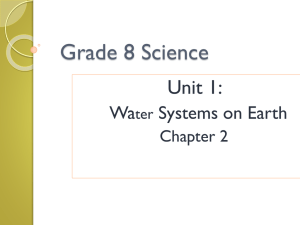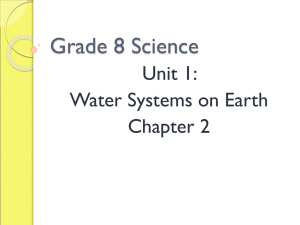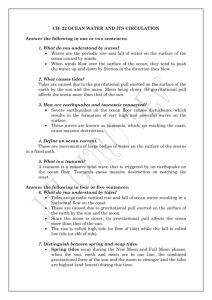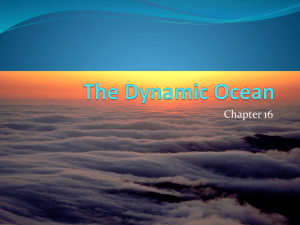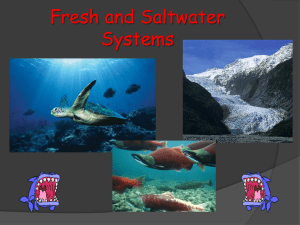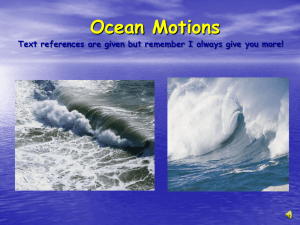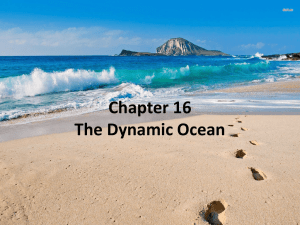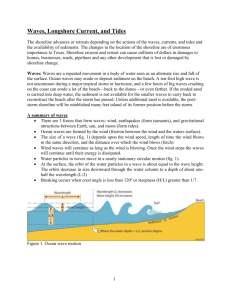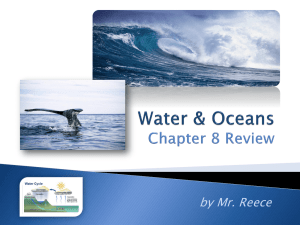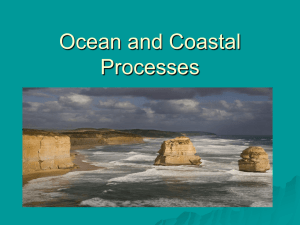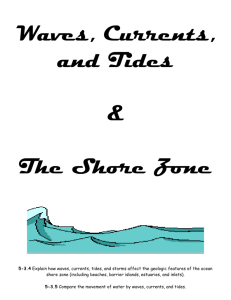Landforms Unit Review Jeopardy
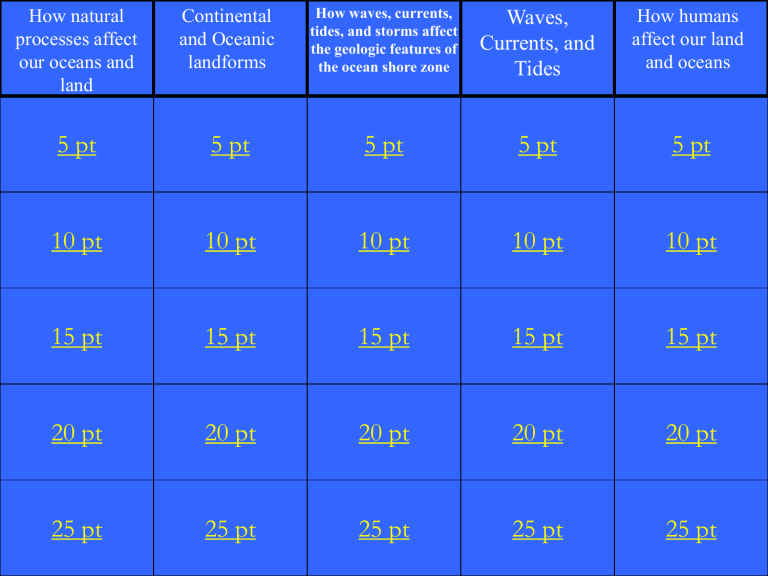
How natural processes affect our oceans and land
Continental and Oceanic landforms
How waves, currents, tides, and storms affect the geologic features of the ocean shore zone
Waves,
Currents, and
Tides
How humans affect our land and oceans
5 pt
10 pt
25 pt
What is the definition of weathering?
What is the definition of weathering?
The processes that break down rocks at or near the surface of the earth.
Weathering can be either physical or chemical.
Choose any natural processes and give an example of it being constructive and deconstructive.
Answers will vary.
Example: Volcanoes exploding can create land= constructive, or destroy land = deconstructive.
Floods can carry nutrients to rivers= constructive, or destroy homes and businesses
= deconstructive.
What is the definition of erosion and deposition?
Provide an example of each.
Answers will vary.
Erosion= the movement of sediments by wind, water, and ice.
Example: A rock being carried off by the wind.
Deposition = the depositing of sediments by wind, water, and ice, usually building up new land.
Example: A delta being formed at the end of a river.
Explain how the following can happen:
1. Earthquakes
2. Landslides
3. Volcanic Eruptions
Earthquakes: vibrations in the
Earth’s surface from sudden movement along a fault line.
Landslides: A mass movement of land due to gravity.
Volcanic Eruptions: Magma emerging from the earth’s crust.
Create a short story about the journey of a rock through weathering, erosion, deposition, and ONE other natural process such as landslide, volcanic eruption, earthquake, or flood.
Answers will vary.
Example: While sun bathing on my glorious cliff one day I saw storm clouds begin to develop. The wind soon picked up speed and the waves began crashing. I was broken off my cliff and fell down into the sea. While down below the ocean I was tossed and turned and broke apart! (weathering) The currents took me all the way across the continent (erosion) where I was dropped off as a piece of sand and I helped create a sand dune!
(deposition) The next month was great, until the day of the big flood . I was then carried all the way into someone’s house!! A few days later I was swept up and landed in a kids sand box!
I’m loving it here, for now….
Identify the ocean floor landform
A and G
A = Continental Slope
G = Trench
Identify the ocean floor landform
B, C, D, and F.
B = Seamount
C = Abyssal Plain
D = Mid- Ocean Ridge
F = Continental Shelf
Complete the chart:
Description
Low land between hills or mountains.
Deep valley with high steep sides.
An opening in the surface from which lava flows.
Land which rises high above ground.
Wide, flat areas of land.
Continental
Canyon
Mountain range
Plains
Oceanic
Rift
Trench
Seamount and volcanic islands
Mid-ocean ridge
Abyssal plains
Description
Low land between hills or mountains.
Deep valley with high steep sides.
An opening in the surface from which lava flows.
Land which rises high above ground.
Wide, flat areas of land.
Continental
Valley
Canyon
Volcano
Mountain range
Plains
Oceanic
Rift
Trench
Seamount and volcanic islands
Mid-ocean ridge
Abyssal plains
Complete the chart
Continental Description
Low land between hills or mountains.
Deep valley with high steep sides.
An opening in the surface from which lava flows.
Land which rises high above ground.
Wide, flat areas of land.
Description
Low land between hills or mountains.
Deep valley with high steep sides.
An opening in the surface from which lava flows.
Land which rises high above ground.
Wide, flat areas of land.
Continental
Valley
Canyon
Volcano
Mountain range
Plains
Identify all the different ocean landforms used in the movie Finding Nemo
Continental Shelf is where Nemo lived.
Nemo traveled out to the
Continental Slope to touch the butt of the boat.
Nemo and Dory didn’t swim through the trench.
Nemo and Dory went to the abyssal plain when they met with the lantern fish.
What is the definition of an inlet?
Inlets are water filled spaces between barrier islands.
Compare and Contrast a barrier island to a estuary
Barrier island is a sandy piece of land surrounded by water on ALL sides.
Currents can change its shape.
Estuary is an area where river meets an ocean. Here there is a mixture of salt and fresh water.
Compare waves, tides, and currents.
Define each one.
Waves- the movement of water, primarily caused by winds. The highest part is called the crest.
Tides- the regular rise and fall of water in oceans caused by the pull of the moons gravity on Earth.
Currents- Flowing streams of water that move continuously through the ocean in a specific direction.
If high tide is at 8am, when will the next high tide be?
Why is there high and low tide?
The next high tide will be at 8PM
The tides change because of the pull of the moon’s gravity on Earth.
TWO times a month these special tides occur.
How many times do low and high tides happen?
High and low tides occur twice a day (totally 4 times)
Neap tide= really low tide
Spring tide = really high tide
Identify whether the situation is caused by waves, currents, or tides:
Sand is carried from the northern end of the Isle of
Palms and deposited on the southern end.
Identify whether the situation is caused by waves, currents, or tides:
Sand is carried from the northern end of the Isle of
Palms and deposited on the southern end.
CURRENT
Identify whether the situation is caused by waves, currents, or tides:
The shoreline is continuously changing as shells, sand, and sediments are brought in and left behind at various times throughout the day.
Identify whether the situation is caused by waves, currents, or tides:
The shoreline is continuously changing as shells, sand, and sediments are brought in and left behind at various times throughout the day.
WAVES
Identify whether the situation is caused by waves, currents, or tides:
The salinity of the water in the estuary changes at different times of the day.
Identify whether the situation is caused by waves, currents, or tides:
The salinity of the water in the estuary changes at different times of the day.
TIDES
Identify whether the situation is caused by waves, currents, or tides:
Towns and area located by the ocean are destroyed by
Tsunamis.
Identify whether the situation is caused by waves, currents, or tides:
Towns and area located by the ocean are destroyed by
Tsunamis.
WAVES
Identify whether the situation is caused by waves, currents, or tides:
Warm and cold water are moved to different regions of
Earth as a result of this.
Identify whether the situation is caused by waves, currents, or tides:
Warm and cold water are moved to different regions of
Earth as a result of this.
CURRENTS
What does conservation mean?
Give an example.
Conservation:
•Human activities that help to keep the natural resources of Earth available and clear of pollution are conservation efforts.
•Example: Reduce, reuse, recycle
What does pollution mean?
Give an example.
•
Pollution
is anything that harms the natural environment.
Examples: littering, smoke fumes, oil spills, etc.
Identify if this is an example of conservation or pollution:
Strip mining
Identify if this is an example of conservation or pollution:
Strip mining
Pollution
Identify if this is an example of conservation or pollution:
Dumping wastes into water
&
Planting trees
Identify if this is an example of conservation or pollution:
Dumping wastes into water
POLLUTION
&
Planting trees
CONSERVATION
List 5 ways you can help conservation efforts.
Answers will vary.
•EXAMPLE:
•Some efforts involve everyone trying to less of something), and recycle reuse reduce (use
(use something over again),
(make something new from an old product).
•Other efforts involve trying to save the land and oceans through clean-up projects, installing fence lines to prevent dune erosion or jetties along the entrance to harbors or groins along beaches in an effort to keep sand from washing away.
•Beach renourishment projects help to restore sand on beaches.
•Planting trees, bushes, or grass is a way to improve air quality as well as keep erosion from carrying away soil.
